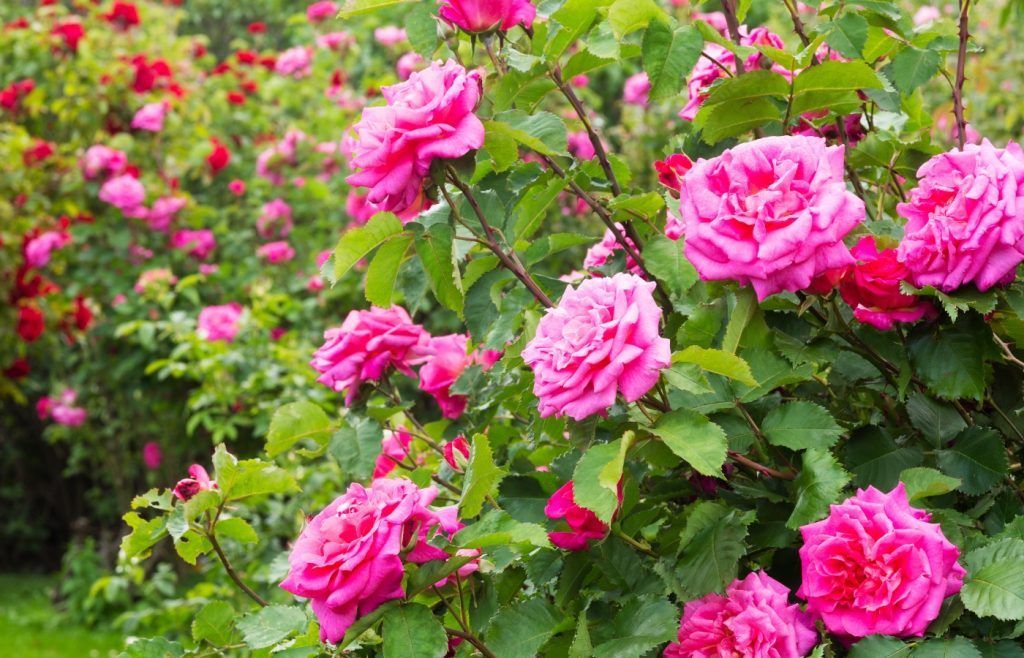Pruning roses is essential to enjoy beautiful blooms and vigorous plants. However, each type of rose and each stage of their life requires specific attention. By mastering these simple actions, you give them every chance to flourish fully.
How to prune your roses when planting?
Bare root roses
The ideal time to plant bare root roses is from November to March, during their dormant period.
Before planting, take the time to care for the roots: cut off any damaged or dried ends, and slightly shorten the longer roots to promote good growth.
Regarding branches, reduce their length by about a third. This pruning, which stimulates growth, helps create a harmonious structure from the first shoots. Don’t forget the step of puddling: coating the roots in a nutrient-rich mud before planting encourages rooting.

Potted roses
Plants purchased in pots or bags require different preparation. For leafless specimens, gently remove excess substrate around the roots to help them adapt better to their new soil.
For leafy plants, do not touch the root ball at all. Keep it intact during planting, and only lightly shorten the branches if necessary. This step minimizes environmental stress.
Container roses
Already well-established, container roses require fewer immediate interventions. During planting, simply remove faded flowers to encourage new growth.
The main pruning will take place at the end of the following winter. In the meantime, a little autumn cleanup is sufficient to keep them in shape.
Pruning after the first season: adapting actions based on varieties
Bush roses and grafted varieties
For bush roses, the work involves selecting three to four main branches, strong and ideally spaced around the base.
This skeleton will serve as the foundation for future blooms. Remove any thin, damaged, or poorly positioned shoots to concentrate energy on the main stems.
As for ground-cover roses, their naturally spreading form only requires light pruning to maintain their compact shape and stimulate flower production.
Large shrub roses
Shrub roses require gentler and less frequent pruning. The goal here is not to restructure them, but rather to remove dead wood and lightly thin the center for better air circulation.
This method preserves their natural form while encouraging the emergence of sturdy new shoots.
Climbing roses and ramblers
For climbing varieties, the pruning must respect their growth habit. Maintain the long main stems and focus on the lateral shoots, which will bear the flowers. Cut them back to about one third of their length to stimulate growth.
Rambling roses, on the other hand, follow the same principles, but their untamed nature requires special care to maintain their aesthetic appeal while guiding their growth.

A precise schedule for healthy roses
Spring pruning: indispensable for a new start
Early spring is the key time to intervene. This pruning allows you to eliminate dead, damaged, or diseased branches, and shorten the main stems. By structuring the rosebush, you promote upcoming blooms and allow each branch to receive more light.
It’s also an opportunity to open the center of the plant for better airflow and to give your rosebush a balanced shape for the new season.
Gentle pruning in autumn
In autumn, pruning is more moderate. The goal is to prepare the roses to face winter.
By removing fragile or damaged parts, you reduce the risk of disease while limiting wind resistance. A slight shortening of the stems also helps protect the rose from winter weather damage.
This step does not replace spring pruning but contributes to strengthening the rose to ensure it can grow vigorously as spring returns.
What are your tips for successfully pruning your roses? Have you noticed any differences based on the varieties you cultivate? Share your experiences and advice in the comments to help other gardeners achieve beautiful blooms!

